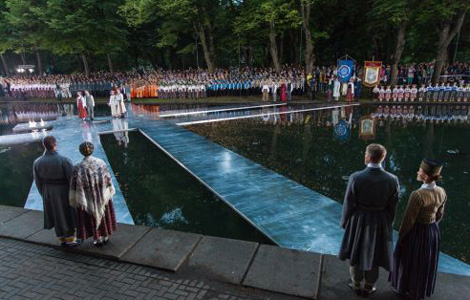Book reveals islands' true history
Updated: 2013-07-02 03:13
By Cai Hong in Tokyo (China Daily)
|
||||||||
Tadayoshi Murata, a professor at Japan's Yokohama National University, has dug into Japanese archives to find evidence that indicates Japan does not have historical ownership of the Diaoyu Islands.
In his newly published book, The Origins of the Japan-China Territorial Issue, Murata insisted the islets belong to China. Given the current situation, he called for joint management and mutual understanding on the issue.
Murata's book starts with a study of the history of the Ryukyu and Okinawa Islands. Japan seized Ryukyu in 1879 and changed its name to Okinawa Prefecture.
"The Diaoyu Islands never emerged in the history of Ryukyu," the professor told journalists and scholars in Tokyo on Monday. "Historically, Ryukyu's territory was clear and included more than 80 islets, with the Diaoyu Islands not included."
Questioning Japan's claim to the islands as its inherent territory, he combed through available documents and data from the Japanese ministries of foreign affairs, internal affairs and defense, seeking to separate truth from fact.
"Fact is more important than face," Murata said. "What matters is fact and truth."
Murata's findings partially support Beijing's white paper on the Diaoyu Islands as an inherent territory of China, which the State Council Information Office issued on Sept 29, 2012.
The Diaoyu Islands consist of Diaoyu Dao, Huangwei Yu, Chiwei Yu, Nanxiao Dao, Beixiao Dao, Nan Yu, Bei Yu and Fei Yu.
In 1884, a Japanese man claimed to be the first to land on Diaoyu Dao and found the island to be uninhabited. The Japanese government dispatched secret fact-finding missions to Diaoyu Dao and attempted to occupy it. Japan's move triggered an alert from China as shown in a report in Chinese newspaper Shen-pao (Shanghai News) on Sept 6, 1885. The Japanese government then stepped back from setting up sovereignty markers on Diaoyu Dao for fear of the reaction from China.
In 1895, China was defeated in the Sino-Japanese War and forced to sign the Treaty of Shimonoseki and cede to Japan the island of Taiwan, together with all islands appertaining or belonging to the island of Taiwan. The Diaoyu Islands were ceded to Japan as islands appertaining or belonging to Taiwan. In 1900, Japan changed the name of the Diaoyu Islands to "Senkaku Islands".
"Japan had taken Taiwan, the Diaoyu Islands and others by war," Murata said.
In August 1945, Japan accepted the Potsdam Declaration, which stipulated that "the terms of the Cairo Declaration shall be carried out and Japanese sovereignty shall be limited to the islands of Honshu, Hokkaido, Kyushu, Shikoku and such minor islands as we determine".
Geographical proof
Geographically, the professor said the Diaoyu Islands are not an inherent part of Japan's territory. Sailing from Ryukyu to the Diaoyu Islands was particularly difficult in ancient times because it was against the wind and the tide.
In June 2004, Murata published Senkaku Islands vs the Diaoyu Islands Dispute, claiming "since the Ming Dynasty (1368-1644), Chinese maps and documents of many kinds marked the Diaoyu Islands, Huangwei Islands and Chiwei Islands as lying within the territory of China".
The islands did not appear in the Map of Great Japan drafted in 1876 by Japan's General Staff Office of the Ministry of the Army. Japan's claim of its purported "discovery in 1884" of the Diaoyu Islands contradicts the navigation map in its own 1783 historical document Sankoku Tsuran Zusetsu (An Illustrated Description of Three Countries), published by prominent Japanese military scholar Hayashi Shihei and clearly stating the area is a part of China.
The professor asked the leaders of China and Japan to listen to each other when the two countries are divided on the territorial issue.
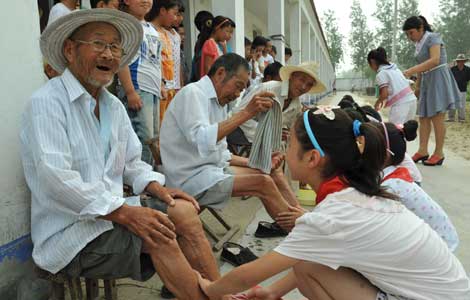
 New filial law sparks debate
New filial law sparks debate
 Bakelants claims Tour de France second stage
Bakelants claims Tour de France second stage
 2013 BET Awards in Los Angeles
2013 BET Awards in Los Angeles
 Gay pride parade around the world
Gay pride parade around the world
 Four dead in Egypt clashes, scores wounded
Four dead in Egypt clashes, scores wounded
 New NSA spying allegations rile European allies
New NSA spying allegations rile European allies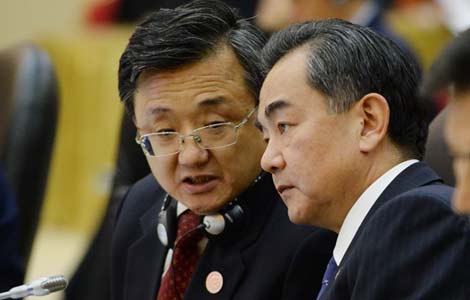
 Foreign minister makes ASEAN debut as tensions flare
Foreign minister makes ASEAN debut as tensions flare
 Yao stresses transparency in charity
Yao stresses transparency in charity
Most Viewed
Editor's Picks

|

|
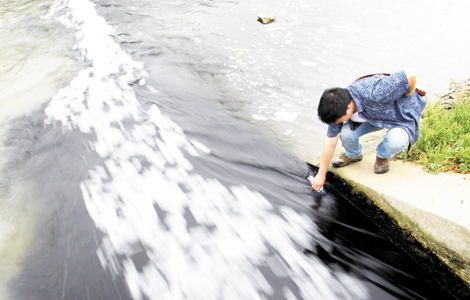
|

|
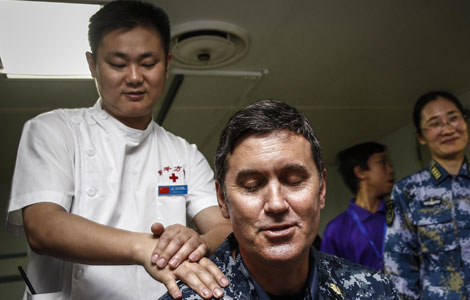
|

|
Today's Top News
Tokyo warned not to resort to 'empty talk'
Snowden applies for Russian asylum
New home prices defy curbs
Shanghai to open first Sino-foreign high school
'Cold War' behaviour by US unacceptable: Germany
Snowden case vindicates need for Web security rule
China launches anti-dumping probes into EU wines
China sets second rare earth export quota for 2013
US Weekly

|

|
